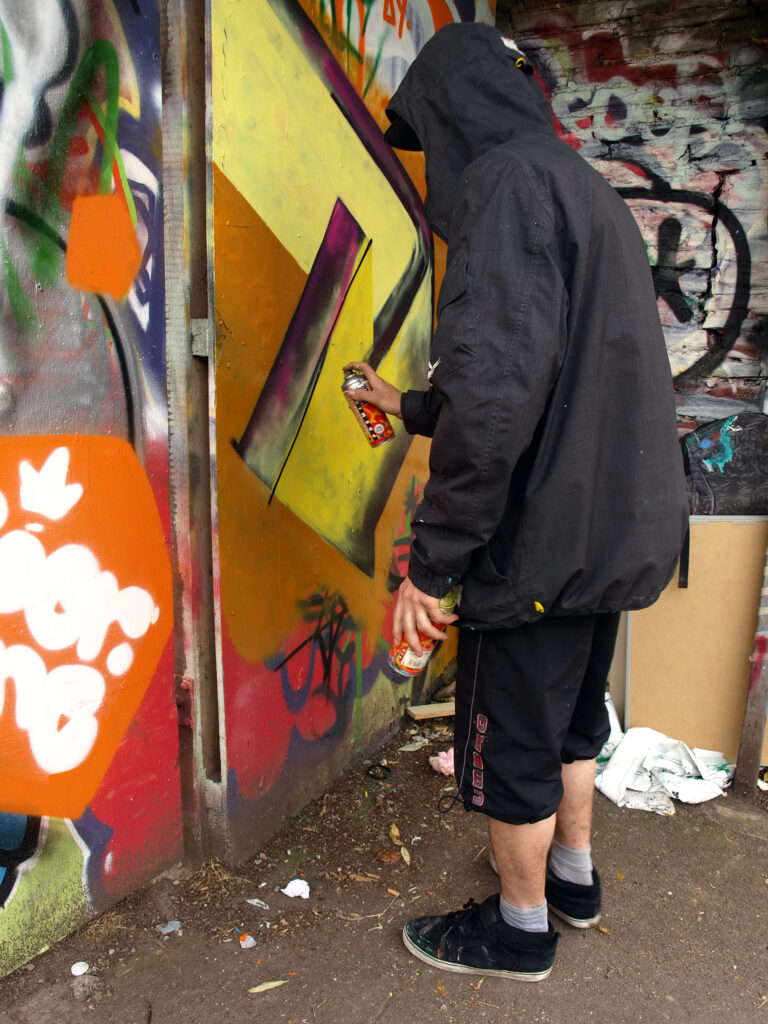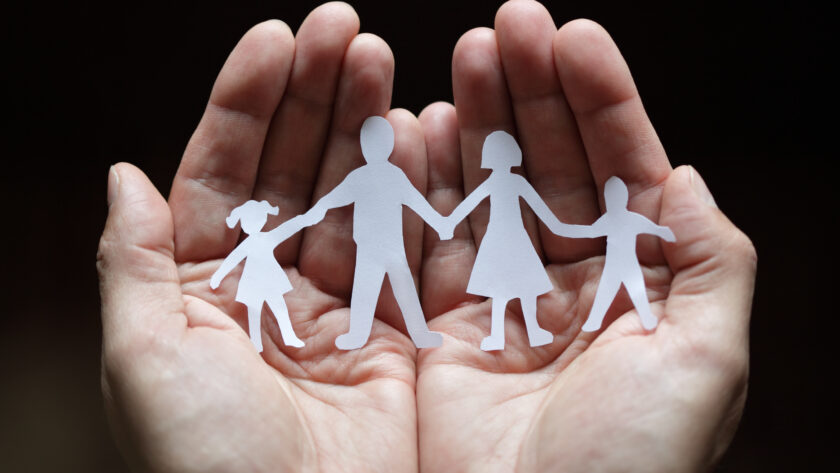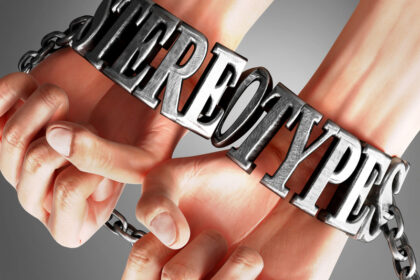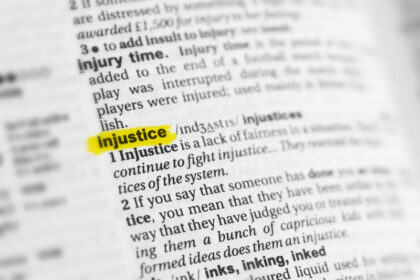How Our Peers & Family Affect Our Behavior
Tommy is a 15-year-old adolescent male with no father figure in his life. His mother is rarely around, and when she is around, there are only negative interactions. Tommy has coped by strengthening the bonds with his friends, who regularly engage in negative behavior. They provide Tommy the praise and feedback that he requires to feel accepted. His acceptance within this group of troublesome friends has contributed towards his apathy in life, in decision making, and in general judgement. This social circle has also significantly contributed to Tommy’s social identity as an outcast with little to no potential or ambition. Tommy’s behaviors have been modified significantly to better fit in, and to impress his friends. The more his friends favorably acknowledge his bad behavior, the more the behavior is encouraged via positive reinforcement (Patterson et al., 1989).
Tommy’s friendships are based upon positive reinforcement, selection, and socialization. While it could be arguable that these influences are inequal in weight, they are all independent constituents to Tommy’s association choices and behavior. Since Tommy has lacked a strong parental role model (especially a father figure), he has an increased tendency for delinquent behavior (Snyder and Stoolmiller, 2002). This is furthermore true when it comes to violent and aggressive behavior, substance abuse, and skipping school (2002). Tommy’s choosing of peers with similar troublesome behavioral patterns is selection in its finest form. As the group reinforces his bad behavior (via positive reinforcement), Tommy experiences socialization as well. In a simpler sense: after being accepted by his friends, he has altered his behavior and choices to reflect those of his friends.
Tommy’s mother is rarely involved in his life, unless it is to argue about his poor behavior. She works so much she rarely sees him, leaving his only role models within his circle of peers. Her parenting style can be most closely categorized as uninvolved. Unfortunately, this parenting style leaves a lot lacking in terms of life skills and appropriate coping mechanisms (Schaffer et al., 2009).
Romantic Relationships and Experiences
While Tommy has had some romantic interests, most of them have been a short-lived, tumultuous relationship. In fact, most of his relationships do not last a couple of months. It could be reasonable to say that since he started dating earlier than his peers, he may have felt a bit more mature for his age. Unfortunately for Tommy, his choice of friends (negative influences) encouraged him to adopt alcohol or substance abuse early on as well (Piehler et al., 2012). And the substance abuse issues Tommy has collected probably have had a bearing on his ability to maintain a steady, functional relationship.

Tommy is likely looking for content within his relationships which might be able to fill the void which was experienced throughout his childhood. This could explain why Tommy’s relationships self-reportedly “start out great.” Without a proper set of parental role models who are successful in displaying appropriate life skills and coping mechanisms, with a working, functional relationship, it could be said Tommy stands little chance to display these same skills in his own relationships. This lack of a role model relationship could be contributing to his paranoia within a relationship (e.g. unreasonable thoughts of his partner cheating on him, or that his partner is getting “tired of him”). Substance abuse and alcohol use can also contribute to thoughts of paranoia, uncertainty, and overall anxiety (Center for Substance Abuse Treatment, 2005).
It could easily be argued that the more relationships which end early in what Tommy likely perceives as failure, the more likely he is to continue to expect the same outcomes in future relationships. This type of “self-fulfilling prophecy” could be one of the psychological reasons he has been unable to change his expectations and behavior in his relationships. Part of his belief system likely stems from his dysfunctional relationship with his only parental role model, his mother. This is because his understanding and interpretation of the failing relationship with his mother, has meant accepting the blame as his own fault. This lack of validation, and perceived lack of success in such an important, influential primacy experience can be crippling in mid to late adolescence, and subsequently throughout adulthood (Harris and Orth, 2019). The repeated fighting with his mother has likely built a learnt coping mechanism for conflict resolution, which has also been an issue which has passed through to conflicts within his romantic relationships.
Antisocial Behaviors and Treatment Options
Tommy’s social life has been gravely affected by his upbringing, lack of role models, and low family income. Lower income families struggle to keep crime and misconduct at a minimum, as they have significantly less resources to approach and treat the situations (Farrington, 2005). Tommy suffers from conduct disorder and delinquency. Conduct disorder for Tommy includes vandalization, disrespect for authority, and substance abuse. He has also been caught stealing and starting fires. Tommy also suffers heavily from delinquent behavior. He is demotivated and regularly skips school. While these behaviors are antisocial in nature, they are most definitely social-driven, as they began and perpetuate as a tool for Tommy to fit in and impress his friends.

Although it is not likely as strong as the rest of his antisocial behavior, he does show signs of aggression. One of the ways he has displayed aggression is through his argumentative fighting with authority figures (such as his mother). He also shows some signs of aggression by regularly participating in violent video games. Violent video games have been linked to psychological aggressive thinking and behavior (Engelhardt et al., 2014).
Some basic treatment methods can be applied to help Tommy with his antisocial behaviors. One of the most studied treatment methods for all his antisocial behavior would be implementing Cognitive Behavioral Therapy (CBT). CBT has been proven to be extremely effective in creating the new skills necessary to control antisocial behavior, such as aggression, conduct disorder, and delinquency (McCart et al., 2006). CBT would give Tommy the skills to reconsider his thinking before his thoughts become actions and his actions become perpetual behavior. With CBT, Tommy may be able to make better decisions, choose better friends, find better influences, and better adjust in new social circles. The ability to make better decision and create better groups of friends would have a significant impact on Tommy’s life.
Tommy may also benefit from Dialectical Behavioral Therapy (DBT). DBT is much different than CBT in that it emphasizes that new skills need to be learned in order to replace behaviors that have not resulted in positive outcomes (Pederson, 2020). The behaviors should be used to address issues which cause critical difficulties in life functioning. Some of the skills Tommy could achieve with DBT includes Life Visions, Wise Mind, Observation, Describing, Participation, Nonjudgmental Stance, One-Mindfulness, Effectiveness, Teflon Mind, and more (2020).
References
Center for Substance Abuse Treatment. (2005). 9 Substance-Induced Disorders. Substance Abuse Treatment for Persons With Co-Occurring Disorders. Rockville (MD): Substance Abuse and Mental Health Services Administration (US). Treatment Improvement Protocol (TIP) Series. Vol. 42. Retrieved from: from: https://www.ncbi.nlm.nih.gov/books/NBK64178/
Engelhardt, C., Bartholow, D., Kerr, G., and Bushman, B. (2014). This is your brain on violent video games: Neural desensitization to violence predicts increased aggression following violent video game exposure. Journal of Experimental Social Psychology, Elsevier. DOI: ff10.1016/j.jesp.2011.03.027ff. ffpeer-00995254
Farrington, D. (2005). Childhood origins of antisocial behavior. Clin. Psychol. Psychother.. Vol. 12. Pp. 177-190. DOI: https://doi.org/10.1002/cpp.448
Harris, M., and Orth, U. (2019). The Link Between Self-Esteem and Social Relationships: A Meta-Analysis of Longitudinal Studies. Journal of Personality and Social Psychology. Advance online publication. DOI: http://dx.doi.org/10.1037/pspp0000265
McCart, M., Priester, P., and Davies, W. (2006). Differential effectiveness of behavioral parent-training and cognitive-behavioral therapy for antisocial youth: a meta-analysis. Database of Abstracts of Reviews of Effects (DARE): Quality-assessed Reviews. York (UK): Centre for Reviews and Dissemination (UK). Retrieved from: https://www.ncbi.nlm.nih.gov/books/NBK73037/
Patterson, G., DeBaryshe, B., and Ramsey, E. (1989). A Developmental Perspective on Antisocial Behavior. American Psychologist. Oregon Social Learning Center. Vol. 44(2). Pp. 329-335. DOI: 0003-066X/89.
Pederson, L. (2020). The Expanded Dialectical Behavior Therapy Skills Training Manual. Second Edition. Pesi Publishing and Media. Pp. 6-285. ISBN: 9781683733072.
Piehler, T. F., Véronneau, M. H., & Dishion, T. J. (2012). Substance use progression from adolescence to early adulthood: effortful control in the context of friendship influence and early-onset use. Journal of abnormal child psychology. Vol. 40(7). Pp. 1045–1058. DOI: https://doi.org/10.1007/s10802-012-9626-7
Schaffer, M., Clark, S., and Jeglic, E. (2009). The Role of Empathy and Parenting Style in the Development of Antisocial Behaviors. Crime and Delinquency. Vol. 55(4). Pp. 586-599. DOI: 10.1.1.1015.396
Snyder, J., and Stoolmiller, M. (2002). Reinforcement and coercion mechanisms in the development of antisocial behavior: The family. In J. B. Reid, G. R. Patterson, & J. Snyder (Eds.), Antisocial behavior in children and adolescents: A developmental analysis and model for intervention. American Psychological Association. Pp. 65–100. DOI: https://doi.org/10.1037/10468-004




